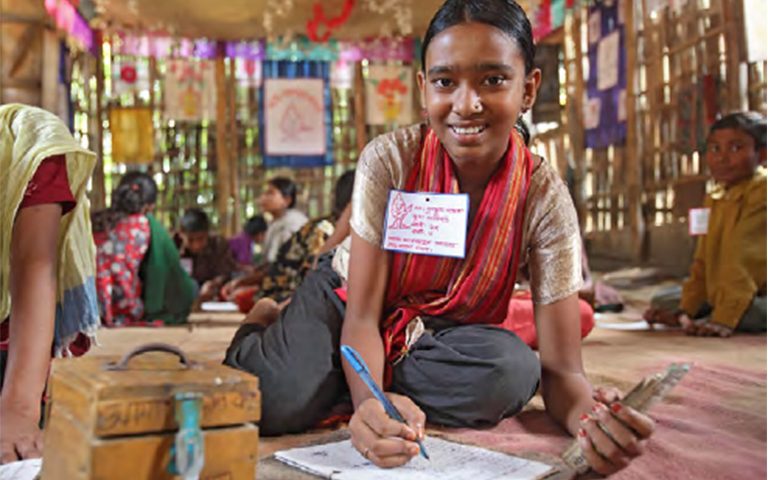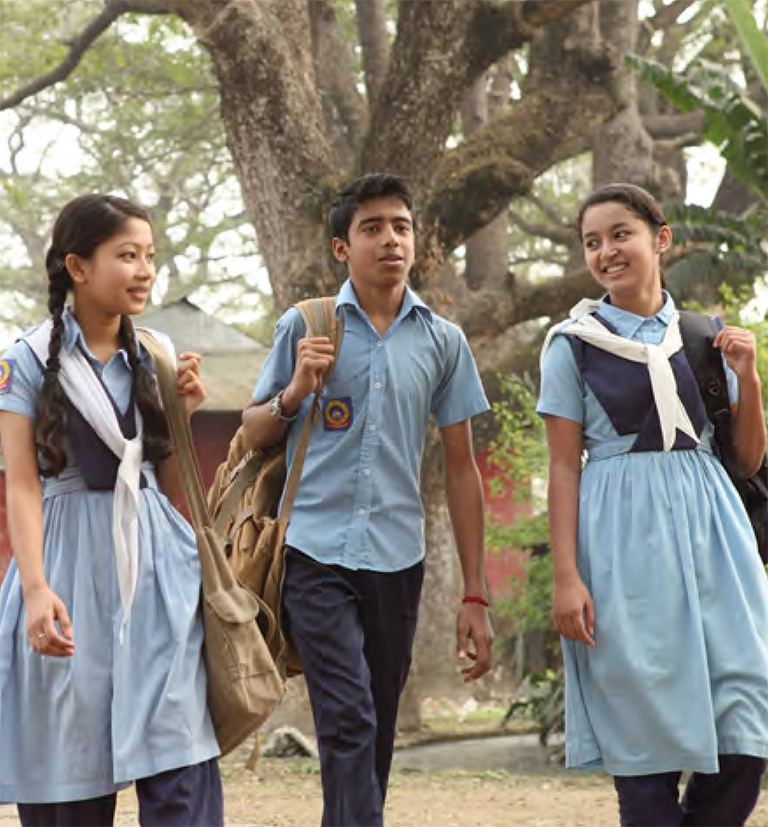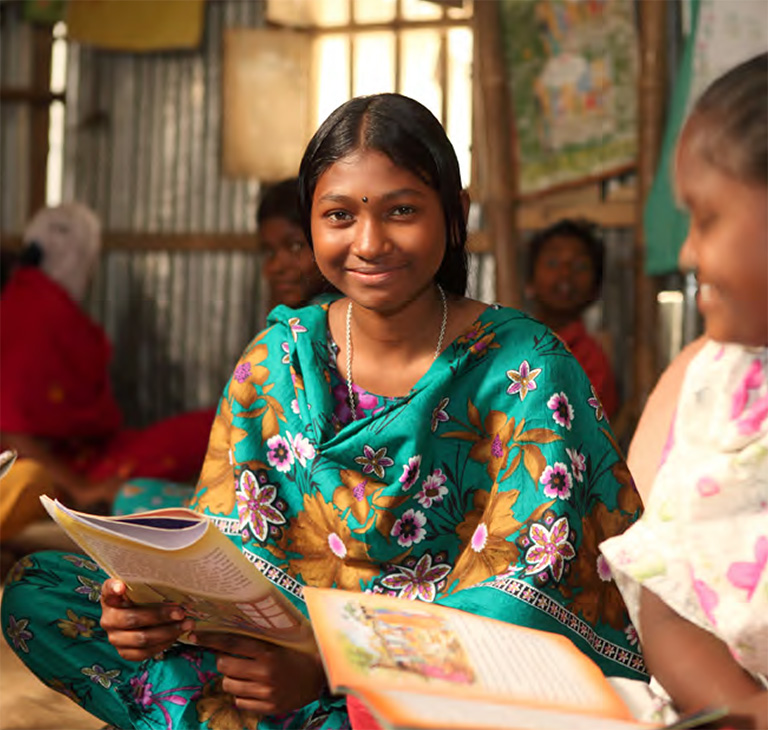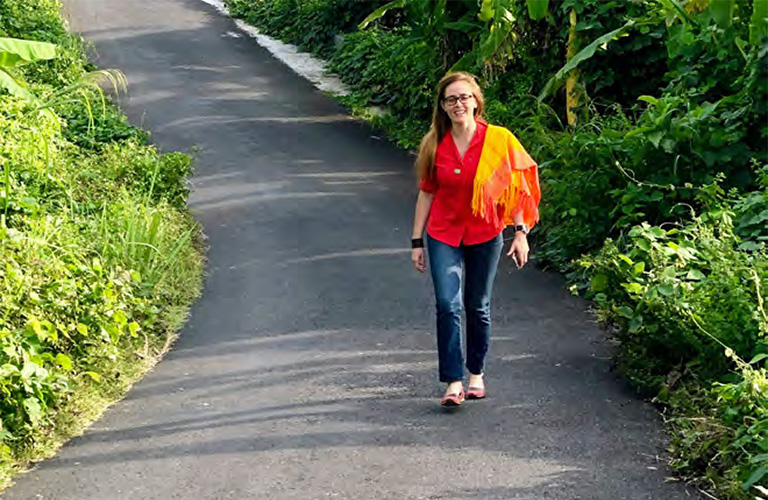Will the torchbearers of tomorrow even have a torch?

Learning to weather the storm
April 1, 2019
Spending my 20s in Bangladesh: Journal of a young Aussie
April 3, 2019Will the torchbearers of tomorrow even have a torch?

Born not too long ago, Bangladesh was a nation that was popularly dubbed a basket case. Now, 47 years later, it is en route to becoming a developed country by 2041. This would not have been possible without the contribution of the country’s young population – the most proactive and fearless force, fuelling the engine of the country’s progress. They are the torchbearers of the developed and prosperous Bangladesh that every Bangladeshi aspires to build – well, at least that is the role that has been inconspicuously bestowed upon them.
This leads one to ask: Are these torchbearers of tomorrow adequately equipped to play the significant role in taking the country to the next level? Have they been given the opportunity or the space required to fulfil their responsibility?
Skills and competency
Bangladesh’s literacy rate reached an all-time high of 72.76 per cent in 2016 in addition to the exponential rise in the tertiary level student enrollment. However, experts argue that the economy is still a long way from equipping the youth with the skills and competencies that they need. Findings from the last National Student Assessment (NSA) by Directorate of Primary Education also concur with this notion. The result shows that 66 per cent of class 3 students and 80 per cent of class 5 students demonstrate below par proficiency in Bengali. In mathematics, the figure is 60 per cent and 90 per cent, respectively. Discussed below are three issues that need to be addressed.
First, the national curriculum is outdated. Despite a lot of interest to incorporate the ‘21st century skills’ into the national curriculum, improvement has been limited. An assessment of the Secondary
Education Sector Development Programme (SESDP) has shed some light on the reasons behind it. The assessment concluded that the attempt to inculcate inventiveness through introduction of ‘creative questions’ has actually increased dependency on ‘note books’. Additionally, there are scores of curriculums that need to be fixed. For example, primary level educational institutions own as many as 11 types of curriculums, aligned with their somewhat different objectives. This is a cause for alarm because it creates intellectual division and weakens the potential of the youth as the driving agents for change.
Second, the country simply does not have enough teachers. A recent study reveals that 60 per cent of the government primary schools do not have sufficient number of teachers. To be precise, 8,560 institutions in hard-to-reach areas face acute shortages. The problem does not stop there. There are instances where enough teachers are available, but their level of skill and aptitude remains questionable. For example, an assessment by CAMPE suggests that as many as 40 per cent of the teachers in both primary schools and secondary schools have not received their subject-based pedagogical training. The third and final issue is the lack of innovation in the teaching-learning methods. The limits of the present day education system of one curriculum, standardised testing, and the process followed to impart knowledge are well recognised. Instead of making education a mundane obligation, it is important for teachers to motivate students to be curious about learning new information and generating fresh ideas.

One of the effective methods for teachers is to propose and discuss a question in the classroom, then urge learners to dig deeper into the topic through real-life settings, such as a museum visit or field trip, collecting photos or notes as evidence, then sharing their findings to produce individual or group answers. Such crossover and context-based learning experiences may encourage students to come up with authentic and fresh angles of evaluating the topics being covered. While countries wide and far are taking specific steps to individualise the process of education, leverage technology, and reduce burden on human teachers, discussion of such innovation is absent in most of the government policy documents in Bangladesh.
Opportunity for the youth
Though the literacy rate in Bangladesh has increased as mentioned above, the share of youth population who are ‘not in education, employment or training’ (NEET) still remains as high as 27.39 per cent. At 44.55 per cent, NEET is much higher among young females. The measurement indicates that more than a quarter of Bangladeshi youth and about half of young females are simply absent from the mainstream economy.
Unemployment rate among youth with tertiary education is at 20.8 per cent. This implies that while the country’s universities are churning out a lot of graduates, a good number of them are unable to find suitable jobs. It is evident that if the youth are not given the scope to contribute, they will not be able to play their role as torchbearers competently. This calls for three more issues to take into consideration.
First, Bangladesh’s economic transition from agriculture to the industrial sector has failed to create as many jobs as anticipated. According to Bangladesh Bureau of Statistics (BBS), only around seven million new jobs were created between 2010 and 2016-17 against nearly 13 million new entrants to the market. The manufacturing sector especially, could generate only 0.3 million new jobs during this period. Hence, it is essential that Bangladesh promotes labour intensive sectors like the jute industry and build infrastructure, for instance, industrial parks, ports, etc to enhance employment generation.
A related issue is the skill gap in the education system. The country’s technical and vocational education training (TVET) system has a combined capacity of 100,000 graduates per year – this is inadequate compared to the need. Moreover, most jobs available for TVET are in the informal sector. These are not seen as dignified and secure as other conventional career paths in Bangladesh. Consequently, the demand for TVET has not grown yet.
Second, women’s participation in the workforce and their wage gap has been a key topic of concern. With automation on the rise, traditional roles of women in the industrial sector like ready-made garment have been on the decline. According to Centre for Policy Dialogue (CPD), female employment in the sector has come down by about 850,000 between 2013 and 2017. The latest LFS notes that at the national level, only 8.2 per cent females are engaged in formal employment compared to 17.9 per cent males. Contrarily, the informal sector employs more females than males, 91.8 per cent and 82.1 per cent respectively. Nonetheless, data shows that the average monthly income from employment in the formal sector was BDT 13,583 for a male, which is slightly higher than what the female employees earned at BDT 12,254. This gap also exists in the informal sector and is expected to be even wider.

Finally, irrespective of any attempt to create more jobs, it is important to be aware of the fact that the two million Bangladeshi youths joining the employment market every year have to become entrepreneurs. Needless to say, becoming an entrepreneur is not easy here. Bangladesh was ranked 103rd out of 140 countries in Global Competitiveness Index and 176th out of 190 countries for ease of doing business. In fact, Bangladesh is ranked lowest among the South Asian nations in the latter index. A long list of governance problems are casting a shadow on the country’s financial institutions – issues associated with difficulties in getting public services and access to justice are some of the main concerns that prevail.
Space for the youth
Young people are considered to be one of the most powerful forces in bringing about political and social change in a country. The independence of Bangladesh, the movement for mother language, or the movement to improve road safety are but a few examples of youth-led actions. Indeed, the youth has been in the forefront of all social transitions in the country, but they are almost always absent in the design of development work, policies, or priority setting. The prospect of forming a safe space for Bangladeshi youth to participate in these activities is narrow and in all probability, is getting narrower.

There is a lack of institutional structure that supports youth participation. For instance, the National Youth Policy (NYP), 2013 and the NYP, 2017 promised to involve the youth to develop programmes at the sub-district level. However, nothing significant happened ultimately. It must be noted that there are some youth organisations which are mostly Dhaka-based. They somehow find their ways into public discussions, but they are sporadic and their geographical position do not allow them to be inclusive for all. The traditional institutional framework in the form of sports or youth clubs of ‘70s and ‘80s are all but gone. Lack of national and local level sponsorships and scarce political attention might be responsible for this mass extinction to a large extent. A similar scenario is prevalent at academic institutions. While attempts have been made in Bangladesh to introduce school-level election and to create space for the elected representatives in the school management committee – it has not lasted long. Correspondingly, most public universities also have a system of electing a student body that facilitates student participation in the management of the university. But most of them have also been unproductive at the practical level.
That being said, often times it is more convenient to point fingers at social institutions in the public realm. Unfortunately, some young people do not have it any easier in the private spheres such as home and within family. Poorer socioeconomic status, inadequate availability of resources, or a combination of both can be a hindrance to receiving the support essential for the youth today. Neither do they have the safe space where they can find support nor do they have the freedom to express themselves. A point has been reached where the woefully unequipped spaces to deal with anyone who has mental health issues has become detrimental and catastrophic, as marked by the unfortunate attack on the Holey Artisan Bakery in July 2016.
Far from the theoretical approaches on paper, Bangladeshi youth are yet to find a seat at the decision-making table. While they have a voice, loud and clear, they need to be heard. Youth are individuals from heterogeneous communities and it is essential that their opinions are seriously considered.
At the end of the day, one cannot pertinently decide what the other person is lacking and requires unless they have walked in their shoes. Therefore, the youth should be given the space to speak out and take action. They know best what they need to defy the odds barricading them from exercising their potential and contributing to their own welfare as well as the society’s.
How do we move forward?
Time and again, we have seen first-hand that when young people rise up, incredible things can happen. The youth population today are empowered, informed and have diverse opinions. Yet, they continue to be treated as a homogenous group of voiceless entities with choices best made on their behalf.

In order to make Bangladesh a thriving future-ready country, it is crucial to provide the youth with the platform where they can share their insights and help construct the country’s road ahead. Their views are important not only because a massive portion of the nation’s population are youth, but also because decisions and policies made today will directly affect them as they inherit the future. Additionally, a stronger commitment is needed to effectively invest in grooming the youth into leaders for tomorrow. Following initiatives may be considered to support the youth and their future in a more concrete manner:
- Introduce new learning methods at academic units to enhance creative growth among students and encourage them to think outside the box from an early stage
- Educators and family members should work to help them break free from societal stigmas that nurture the idea that only formal education and employment is prestigious
- Since attaining full employment is more idealistic than pragmatic, the youth should be encouraged to be entrepreneurs and the process of doing business should be made more convenient with proper infrastructure and easily accessible resources
- Private sectors hiring females should be incentivised to enhance the process and promote gender equality
- Last but not the least, it has become absolutely essential to take mental health issues among youth as real. Therefore, funds should be allocated mindfully to address their issues through competent counsellors and medical support
It is fundamental to acknowledge that while the youth have the power to shape the future of the nation, they are also shaped by the unrelenting socio-cultural context and structures they live in.
All stakeholders have to support creating an environment where they are able to excel. Only then will the youth be successful at competently obtaining the torch and playing the significant role of being the torchbearers of Bangladesh’s tomorrow.
Nimmi Nusrat Hamid is working as a consultant at BRAC Advocacy for Social Change.

